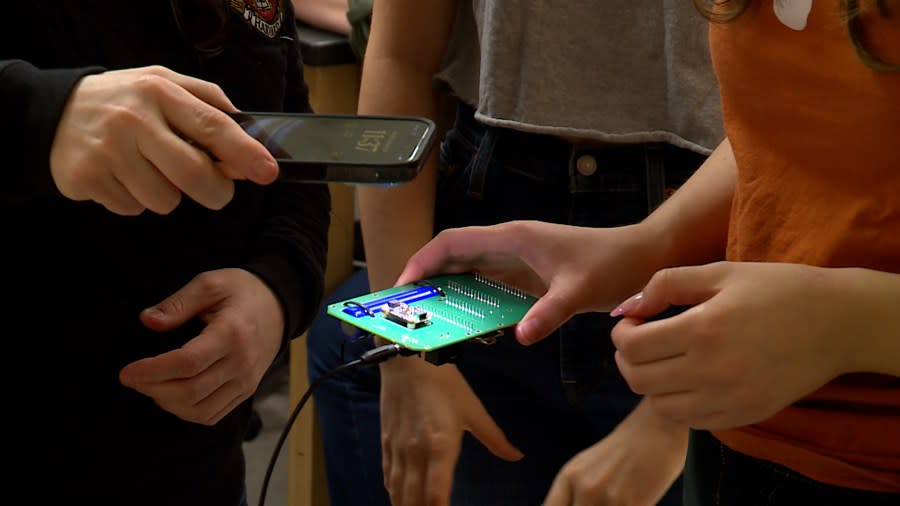Eclipse experience for the visually impaired; how this Harvard team is turning light into sound
AUSTIN (KXAN) — The April 8 total solar eclipse passing over Texas is a once-in-a-lifetime experience with the next one passing over a tiny sliver of the United States in 2044. Scientists from Harvard recently visited the University of Texas in order to ensure everyone will get a chance to be part of the event.
“It’s important that we make sure that these eclipses are accessible to everyone,” said Allyson Bieryla, with the Center for Astrophysics at Harvard and the Smithsonian.
In order to do this, Bieryla and her team created the LightSound Project. A small device made of just three parts, it can turn light into sound.
“The bright bright sunlight will be kind of like a flute sound, then it goes to like a mid range clarinet. And then it goes to like a low clicking sound,” Bieryla said. The device uses a light sensor and an old school MIDI board to generate the sound.
Her team worked with members of the visually impaired community, including astronomer Wanda Diaz Merced, to develop the device.
How much of the sun will be covered in your city during April’s solar eclipse?
“I’m not blind or low vision. So it’s important that we get that input from the community of what they want,” Bieryla said.
Construction of the device began in 2017, before the last total eclipse to pass over the United States. At the time, the team built only three of the boxes. They hope to have more than seven hundred built ahead of the April 8 eclipse.
How do you build a light to sound device?
The LightSound team has spent the last few months travelling the country. In January, the team visited the University of Texas where they hoped members of the community could help them build close to a hundred devices.
“Being able to assist those who may not have the same type of visual capabilities that we do, along with experiencing a rare event. The overlapping of those two experiences, I think is really special,” said Jason Jendrusch, an amateur astronomer who attended the event.

Bieryla said they selected UT for the event due to its proximity to the eclipse. They also visited UT San Antonio and plan to host an event at Harvard.
The devices will be donated to people in need ahead of the eclipse. Funding from the International Astronomical Union, the American Astronomical Society, the National Science Foundation, and the Simon’s Foundation makes the project possible.
Taxidermy, massages & weddings: Unique Texas eclipse festivals prepare for April 8
“Hearing people’s reaction and communities that that felt, not included or thought about after the fact, it’s just devastating,” said Bieryla. “To hear that this is having some small impact in that way is just phenomenal.”
Bieryla said that the team assembled 150 devices at the UT event and 400 total. Their next event will be held in Boston this March.
After this eclipse, the team plans to expand their efforts overseas ahead of the next European eclipse in 2026.
For the latest news, weather, sports, and streaming video, head to KXAN Austin.

